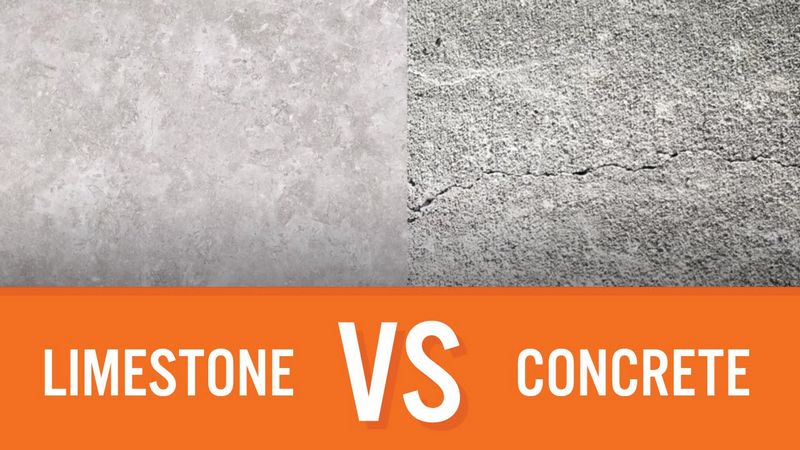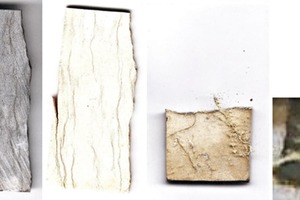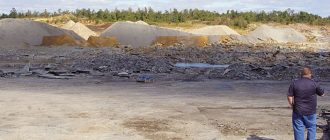
What is the Difference Between Lime and Limestone?
Lime and limestone are two commonly used terms in the construction industry, but they refer to different materials. Understanding the differences between these two minerals is crucial for professionals in the field, as each material has unique properties and uses.
Limestone is a sedimentary rock composed mainly of calcium carbonate. It is formed from the sedimentation of marine organisms such as coral and shells over millions of years. Limestone is a versatile material that can be used in various construction applications, including as a building stone, in road construction, and as a raw material for cement production.
Lime, on the other hand, is not a rock but a mineral derived from limestone. It is produced by heating limestone in a kiln, a process known as calcination, which removes the carbon dioxide and leaves behind calcium oxide, also known as quicklime. Lime is highly reactive and can be used for a range of applications, including in construction as a binder in mortar and plaster, as well as in agriculture to neutralize acidic soils.
In summary, while limestone is a sedimentary rock composed mainly of calcium carbonate, lime is a mineral derived from limestone, produced by heating it in a kiln. Limestone is a versatile material used in various construction applications, while lime is highly reactive and used as a binder in construction and for agricultural purposes. Understanding the differences between these two materials is essential for professionals in the construction field to ensure the most appropriate and effective use of each in their projects.
Definition and Composition
Limestone is a type of sedimentary rock that is mainly composed of the mineral calcite (calcium carbonate). It is formed from the remains of marine organisms such as coral and shells that have been compressed over millions of years. Limestone is commonly used in construction due to its durability and versatility.
Lime, on the other hand, is not a rock but a chemical compound. It is derived from limestone through a process called calcination, which involves heating limestone to a high temperature to release carbon dioxide. This transforms limestone into quicklime (calcium oxide). Quicklime is then hydrated to produce hydrated lime (calcium hydroxide).
The main difference between limestone and lime lies in their composition. Limestone is primarily composed of calcium carbonate, while lime is mainly composed of calcium oxide or calcium hydroxide. The conversion of limestone into lime through calcination alters its properties and results in a different chemical composition.
Both limestone and lime have various industrial applications. Limestone is commonly used as a building material, in the production of cement, and as aggregate for road construction. Lime, on the other hand, is used in a range of industries, including agriculture, water treatment, steel manufacturing, and construction.
In summary, the key difference between limestone and lime is that limestone is a sedimentary rock primarily composed of calcium carbonate, while lime is a chemical compound derived from limestone through calcination.
Formation
Lime and limestone are formed through different processes, resulting in their key differences in composition and characteristics.
Lime, or calcium oxide (CaO), is a mineral obtained by heating limestone in a kiln. This process, known as calcination, involves the removal of carbon dioxide (CO2) from limestone, resulting in the formation of lime. Lime is a versatile material commonly used in construction, agriculture, and various industrial applications.
Limestone, on the other hand, is a sedimentary rock primarily composed of calcium carbonate (CaCO3) derived from the accumulation of marine shells, coral, and other underwater organisms over millions of years. This sedimentation process occurs in bodies of water such as oceans, lakes, and seas, where the remains of these organisms settle and gradually solidify into limestone formations.
The main difference between lime and limestone lies in their composition and the processes involved in their formation. Lime is a mineral derived from limestone through calcination, while limestone is a sedimentary rock formed by the buildup of calcium carbonate-rich materials over time.
In summary, lime is a mineral obtained from limestone through the process of calcination, while limestone is a sedimentary rock formed from the accumulation of calcium carbonate-rich materials. Understanding the differences in their formation helps to explain the variations in their properties and applications.
Physical Properties
Limestone is a sedimentary rock that is mainly composed of calcium carbonate. It is formed over millions of years through the accumulation of shells, coral, algae, and other organic materials. Lime, on the other hand, is a chemical compound that is produced by heating limestone in a kiln. Despite their similar origins and composition, there are several key differences in their physical properties.
- Limestone is a naturally occurring rock, while lime is a man-made compound.
- Limestone is a solid mineral that is found in various forms, such as compact, granular, or crystalline. Lime, on the other hand, is typically produced in powdered or pelleted form.
- Limestone has a hardness of about 3 on the Mohs scale, making it a relatively soft stone. Lime, on the other hand, has a hardness of about 4-5, which makes it slightly harder and more durable.
- Limestone has a white or gray color, while lime can be white, gray, or a pale yellow color.
- Limestone is commonly used in construction as a building material, typically in the form of blocks, bricks, or tiles. Lime, on the other hand, is primarily used in construction as a mortar or plaster.
Overall, the main difference between limestone and lime lies in their manufacturing processes and physical characteristics. Limestone is a naturally occurring rock composed of calcium carbonate, while lime is a chemical compound produced by heating limestone. Limestone is commonly used as a building material in various forms, while lime is primarily used as a construction mortar or plaster.
Chemical Properties
Limestone is a sedimentary rock composed mainly of calcium carbonate. It is a mineral that is formed over millions of years from the remains of marine organisms. The main difference between limestone and lime lies in their chemical composition.
Limestone contains the mineral calcium carbonate (CaCO3), which gives it its characteristic white color. Calcium carbonate is also the main component of lime, but it undergoes a chemical reaction to form calcium oxide (CaO) when heated. This process is known as calcination.
Lime, or calcium oxide, is obtained by heating limestone in a kiln at a high temperature. The heat causes the limestone to release carbon dioxide, leaving behind lime. Lime is often used in construction as a binding agent in mortar and plaster.
The chemical properties of limestone and lime make them valuable materials in various industries. Limestone is used as a building stone, as well as in the production of cement, glass, and steel. Lime, on the other hand, is used in agriculture to neutralize acidic soils and improve crop growth.
Both limestone and lime have important roles in different applications, but their chemical composition sets them apart. Limestone is a natural rock, while lime is a processed material derived from limestone. Understanding their differences is crucial in choosing the right material for specific uses.
Uses in Construction
Limestone is a widely used mineral in the construction industry. It is a sedimentary rock composed mainly of calcium carbonate. Due to its versatility, limestone has various applications in the construction sector. Here are some of its key uses:
- Building materials: Limestone is commonly used as a building material for construction projects. It can be used as a base material for roads, as well as for the production of concrete and cement.
- Dimension stone: Limestone is often used as a dimension stone, which means it is cut and finished to specific sizes for use in various architectural and decorative applications. It can be used for flooring, walls, countertops, and more.
- Aggregate: Crushed limestone is used as aggregate in concrete and asphalt mixes. It provides strength and durability to the final product, making it suitable for highways, bridges, and other infrastructure projects.
- Fill material: Limestone can be used as a fill material in construction projects, such as backfilling trenches and filling in excavated areas. Its compact nature and stability make it ideal for these applications.
- Retaining walls: Limestone is commonly used in the construction of retaining walls. Its strength and durability make it a suitable choice for creating stable and aesthetically pleasing walls.
Lime, on the other hand, has specific uses in construction due to its chemical properties. It is produced by heating limestone and consists mainly of calcium oxide (CaO). Here are some of the key uses of lime in construction:
- Mortar and stucco: Lime is often used to make mortar and stucco. It is mixed with sand, water, and other additives to create a durable and adhesive material for binding bricks, stones, or other building materials.
- Soil stabilization: Lime can be used to stabilize and improve the properties of soils in construction projects. It helps increase the load-bearing capacity of the soil and reduces its plasticity, making it suitable for foundations, roads, and other structures.
- Plaster: Lime plaster is a traditional building material that has been used for centuries. It provides a smooth and decorative finish to walls and ceilings and is known for its breathability and mold resistance.
- Asphalt modification: Lime can be used as an additive in asphalt mixes to improve their performance. It helps reduce rutting, cracking, and moisture damage, thereby increasing the lifespan of the pavement.
- Water treatment: Lime is used in water treatment plants for pH adjustment and to remove impurities. It plays a crucial role in the purification and disinfection of drinking water.
Overall, both limestone and lime have important applications in construction. While limestone is primarily used as a building material and aggregate, lime is used for specific purposes such as mortar, soil stabilization, and water treatment.
Uses in Agriculture
Both lime and limestone are frequently used in agriculture due to their mineral composition and calcium carbonate content. However, there are distinct differences between the two substances that make them suitable for specific agricultural applications.
Lime:
- Lime is a versatile mineral that is derived from limestone.
- It is commonly used to increase the pH level of acidic soils, making them more alkaline.
- Alkaline soils are beneficial for plant growth as they provide vital nutrients such as calcium, magnesium, and potassium.
- Lime can be applied either in its pure form, known as quicklime, or in a powdered form called hydrated lime.
- Quicklime is highly reactive and requires careful handling, while hydrated lime is less reactive and easier to apply.
- Other uses of lime in agriculture include treating wastewater and managing nutrient balance in compost.
Limestone:
- Limestone is a sedimentary rock that is composed mainly of calcium carbonate.
- It can be crushed into various sizes and used as a soil amendment to improve soil quality and structure.
- Limestone is often used in landscaping as a base material for paths, driveways, and garden beds.
- When combined with other minerals, such as gypsum, limestone can be used as a fertilizer to provide essential nutrients for plant growth.
- Limestone can also be used to neutralize acidic soils and reduce soil erosion.
In summary, while both lime and limestone can be beneficial in agriculture, lime is primarily used to adjust soil pH and provide essential nutrients, while limestone is more commonly used as a soil amendment and landscape material.
Uses in Environmental Remediation
Limestone, a sedimentary rock and a mineral composed mainly of calcium carbonate, has various uses in environmental remediation. Its properties make it a valuable resource for addressing environmental issues and restoring damaged ecosystems. The following are some of the key uses of limestone in environmental remediation:
- Water Treatment: Limestone is commonly used in water treatment processes. When added to water, it helps to neutralize acids and remove impurities. The alkalinity of limestone helps to balance the pH levels and improve the overall water quality.
- Air Pollution Control: Lime, a derivative of limestone, is widely used in air pollution control systems. It is often used as a sorbent to capture and neutralize sulfur dioxide (SO2), a harmful gas released from industrial processes and power plants. Limestone-based scrubbers are commonly used in coal-fired power plants to reduce SO2 emissions.
- Soil Stabilization: Limestone is widely used in soil stabilization projects. Its ability to react with soil minerals and bind particles together helps in improving the stability and strength of soils. It is often used in road construction and building foundations to prevent soil erosion and maintain stability.
- Land Reclamation: Limestone is used in land reclamation projects to restore and rehabilitate damaged environments. Its availability and ability to improve soil conditions make it a suitable material for re-establishing vegetation and promoting the recovery of ecosystems in areas affected by mining or other activities.
- Waste Treatment: Limestone is used in waste treatment processes to neutralize acidic waste materials and reduce their harmful effects. It can be used to treat acidic mine drainage, industrial waste, and landfill leachate. The alkaline properties of limestone help to raise pH levels and enhance the efficiency of waste treatment processes.
In conclusion, limestone plays a crucial role in environmental remediation. Its versatility and unique properties make it an essential resource for addressing various environmental issues, such as water and air pollution, soil stabilization, land reclamation, and waste treatment.
Comparison of Strength and Durability
One of the key differences between lime and limestone lies in their strength and durability as construction materials.
Lime: Lime is a mineral substance that is produced by heating limestone, a sedimentary rock composed of calcium carbonate. The heating process, called calcination, chemically transforms limestone into lime. Lime is commonly used in construction for various purposes due to its advantageous properties.
- Strength: Lime is less strong compared to limestone. It has a lower compressive strength, which means it is more prone to breakage under heavy loads or pressure.
- Durability: Lime is not as durable as limestone. It is more susceptible to weathering and erosion, which can lead to deterioration over time. However, lime can still be used in construction with proper maintenance and preservation techniques.
Limestone: Limestone, on the other hand, is a sedimentary rock that is primarily composed of calcium carbonate. It is formed over millions of years through the accumulation and compaction of marine organisms such as shells and coral.
- Strength: Limestone is known for its impressive strength. It has a high compressive strength, making it suitable for load-bearing structures and heavy construction.
- Durability: Limestone is highly durable and resistant to weathering and erosion. It can withstand harsh environmental conditions, making it a favored choice for long-lasting constructions.
In summary, while lime and limestone are both derived from calcium carbonate, they differ in terms of strength and durability. Lime is less strong and less durable compared to limestone, making it more suitable for applications where heavy loads or extreme environmental conditions are not a concern. Limestone, on the other hand, offers higher strength and superior durability, making it a preferred choice for construction projects that require long-lasting and resilient structures.
Availability and Cost
Lime and limestone are both widely available minerals that are used in various industries, especially in construction. However, there are some key differences in their availability and cost.

Lime is produced by heating limestone, a sedimentary rock composed mainly of calcium carbonate. Limestone is a widely abundant rock found in many parts of the world, making lime readily available for use.
On the other hand, limestone itself can be used as a construction material. It is a durable stone that is commonly used in building materials, such as crushed stone and concrete. However, the availability of limestone can vary depending on the region.
In terms of cost, lime is generally more expensive than limestone. This is because the production process of lime requires additional energy to heat limestone and convert it into lime. The cost of transportation and processing also contribute to the higher price of lime.
Limestone, on the other hand, is less expensive as it requires minimal processing compared to lime production. The cost of transportation can still influence the price, but overall, limestone is more cost-effective than lime.
| Availability | Widely available | Availability varies |
| Cost | Higher cost due to production process | Lower cost due to minimal processing |
In conclusion, both lime and limestone are available minerals used in construction. Lime is produced from limestone and is more expensive due to the production process, while limestone itself is a durable stone that is less expensive and readily available. The availability and cost of these materials may vary depending on the region.
Environmental Impact
The production and use of both limestone and lime can have significant environmental impacts. Here are some key considerations:
- Construction and Quarrying: Both limestone and lime are commonly used in the construction industry as building materials. Quarrying and mining activities to extract these minerals can result in the disturbance and destruction of natural habitats, including the loss of biodiversity.
- Energy Consumption: The production of lime involves a process called calcination, where limestone is heated at high temperatures to form lime. This process requires a significant amount of energy, which often comes from fossil fuels. The burning of fossil fuels releases greenhouse gases into the atmosphere, contributing to climate change.
- Water Pollution: Quarrying activities can also lead to water pollution. Sediments and chemicals from mining sites can contaminate nearby water sources, affecting aquatic ecosystems and drinking water supplies.
- Acid Rain: Lime has been used as a material to neutralize acidic soil and water. However, the production and application of lime can potentially contribute to acid rain. When lime reacts with water, it produces calcium carbonate, which can release carbon dioxide into the atmosphere. This can result in the formation of acid rain when it combines with other pollutants.
- Carbon Capture: On the other hand, limestone has the potential to serve as a natural carbon sink. It absorbs carbon dioxide from the atmosphere during the process of weathering, contributing to the long-term storage of carbon. However, this process occurs over a long period of time and may not offset the carbon emissions produced from limestone and lime production.
Overall, the production and use of limestone and lime have both positive and negative environmental impacts. It is important for industries and governments to implement sustainable practices and technologies to minimize the negative effects and maximize the potential benefits of utilizing these resources.
Storage and Handling
Both lime and limestone are commonly used in construction and other industries for their unique properties.
Lime, also known as quicklime or burnt lime, is a white, caustic, crystalline solid that is derived from heating limestone. It is typically produced by heating limestone in a kiln until it reaches a temperature of about 900 degrees Celsius (1652 degrees Fahrenheit), which causes it to undergo a chemical reaction that converts the calcium carbonate in the limestone into calcium oxide, or lime.
Limestone, on the other hand, is a sedimentary rock composed primarily of calcium carbonate. It is formed over millions of years through the accumulation and compaction of coral, shells, and other organic materials. Limestone is usually found in its natural state, but it can also be quarried and processed into various forms for use in construction.
When it comes to storage and handling of lime and limestone, there are some key differences to note:
- Hygroscopic properties: Lime is highly hygroscopic, meaning it readily absorbs moisture from the air. It is crucial to store lime in a dry environment to prevent it from being exposed to moisture, as this can lead to the formation of lumps and a loss of its effectiveness. On the other hand, limestone is less hygroscopic and does not require the same level of caution during storage.
- Handling precautions: Lime is a caustic substance that can cause burns, so it is important to handle it with care. Protective clothing, including gloves and goggles, should be worn when working with lime to avoid any contact with the skin or eyes. Limestone, being in a solid rock form, does not pose the same risk and can be safely handled with minimal precautions.
- Particle size: Lime is typically available in powdered or granular form, which allows for easy mixing and application in various industries. Limestone, on the other hand, is usually found in larger, solid rock forms. It may need to be crushed or ground into smaller particle sizes before it can be used in construction or other applications.
In summary, the main differences in storage and handling between lime and limestone lie in their hygroscopic properties, handling precautions, and particle size. While lime requires careful storage in a dry environment and proper protective measures during handling, limestone is less hygroscopic and does not pose the same risks. Lime is often available in powdered or granular form, while limestone is typically found in larger, solid rock forms.
Common Misconceptions
There are several common misconceptions when it comes to understanding the difference between limestone and lime. These misconceptions often arise from the similarities between the two substances, as well as their common use in construction and as building materials.
- Limestone is just a type of rock: While limestone is indeed a type of rock, it is more specifically classified as a sedimentary rock. It is formed from the accumulation of organic materials, such as shells and coral, as well as the precipitation of calcium carbonate. In contrast, lime refers to the mineral substance that is derived from limestone through a process called calcination.
- There is no difference between limestone and lime: This is a common misconception. While limestone and lime are closely related, they are not the same thing. Limestone refers to the sedimentary rock, while lime refers to the mineral substance that is derived from limestone.
- Lime is just another name for limestone: Although limestone and lime are closely related, they are not interchangeable terms. Limestone refers to the rock itself, while lime refers to the mineral substance that is derived from limestone. Lime is often used in construction and as a building material due to its properties as a binder.
It is important to understand the difference between limestone and lime in order to avoid confusion and to accurately identify the materials being used in construction projects. Both limestone and lime have their own distinct properties and uses, and it is crucial to recognize these differences for successful construction projects.
Q&A:
What is the difference between lime and limestone?
Lime and limestone are both sedimentary rocks, but they have different compositions and uses. Limestone is primarily made up of calcium carbonate, while lime is a chemical compound of calcium oxide and water.
Can lime be made from limestone?
Yes, lime can be made from limestone through a process called calcination. During calcination, limestone is heated to high temperatures to drive off carbon dioxide and produce lime.
What are some common uses of limestone?
Limestone is commonly used as a building material, as a raw material in the production of cement, and as a soil conditioner in agriculture. It is also used in the purification of iron ore in the steel industry.
What are some common uses of lime?
Lime has a wide range of uses. It is commonly used in the manufacturing of glass, in water treatment to adjust pH levels, in the production of paper and pulp, and in the production of steel. It is also used as a soil amendment to neutralize acidic soils.
Are lime and limestone interchangeable?
No, lime and limestone are not interchangeable. While limestone is a rock, lime is a chemical compound made from limestone. They have different properties and uses, although they are related.
What is the difference between lime and limestone?
Lime and limestone are both sedimentary rocks, but they have different compositions. Limestone is mainly composed of calcium carbonate, while lime is made from limestone that has been heated, or “burned,” to drive off carbon dioxide and produce calcium oxide. So, in simple terms, limestone is the precursor material for lime.
Is lime the same as limestone?
No, lime and limestone are not the same. As mentioned earlier, limestone is the raw material, while lime is produced by heating limestone to remove carbon dioxide. The process of heating limestone to produce lime is called calcination.






